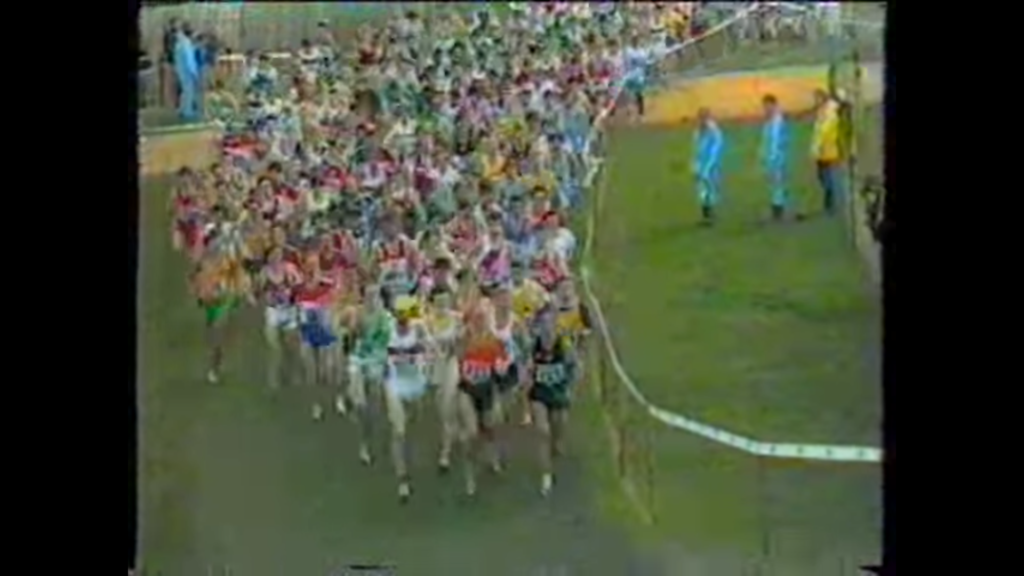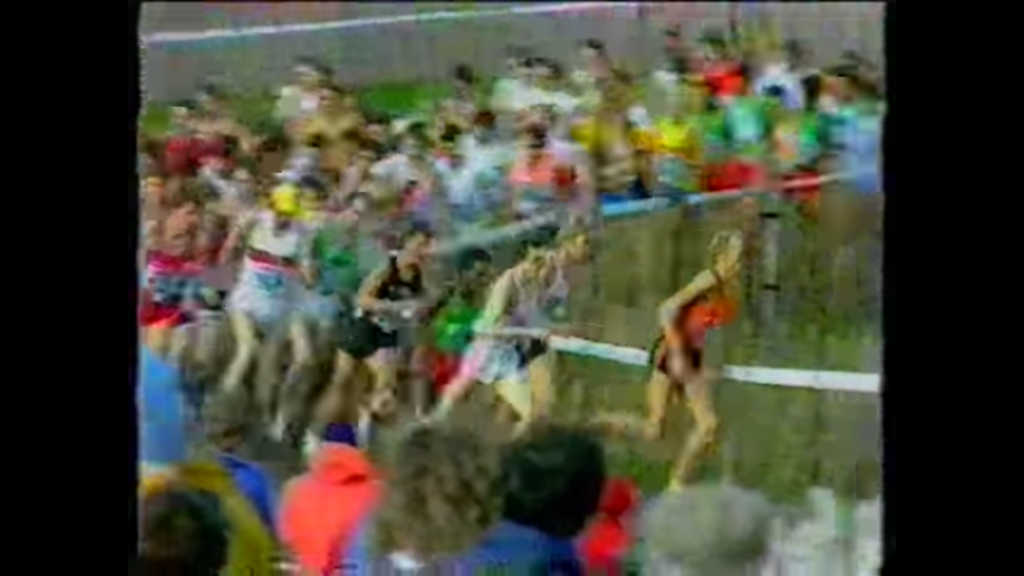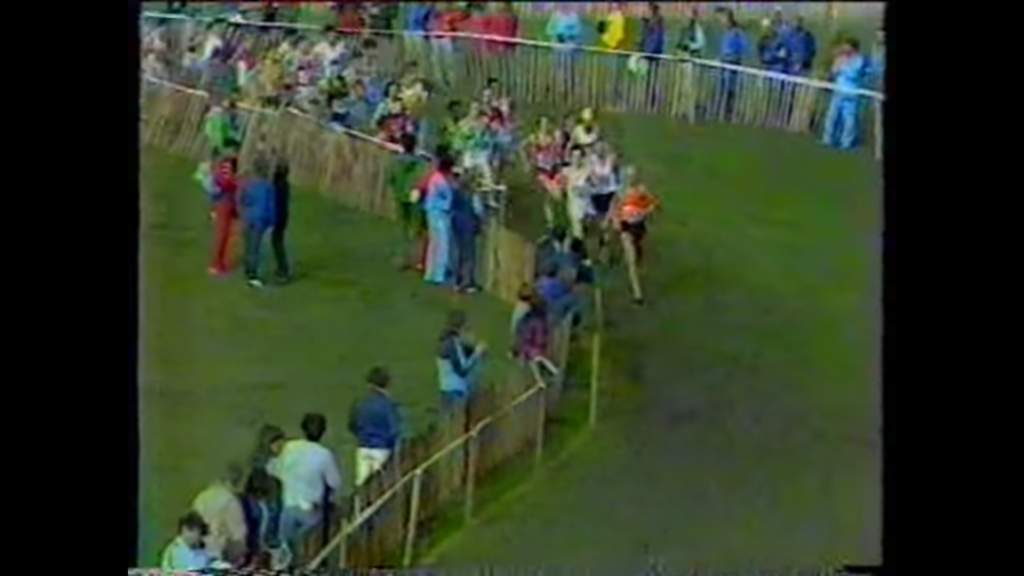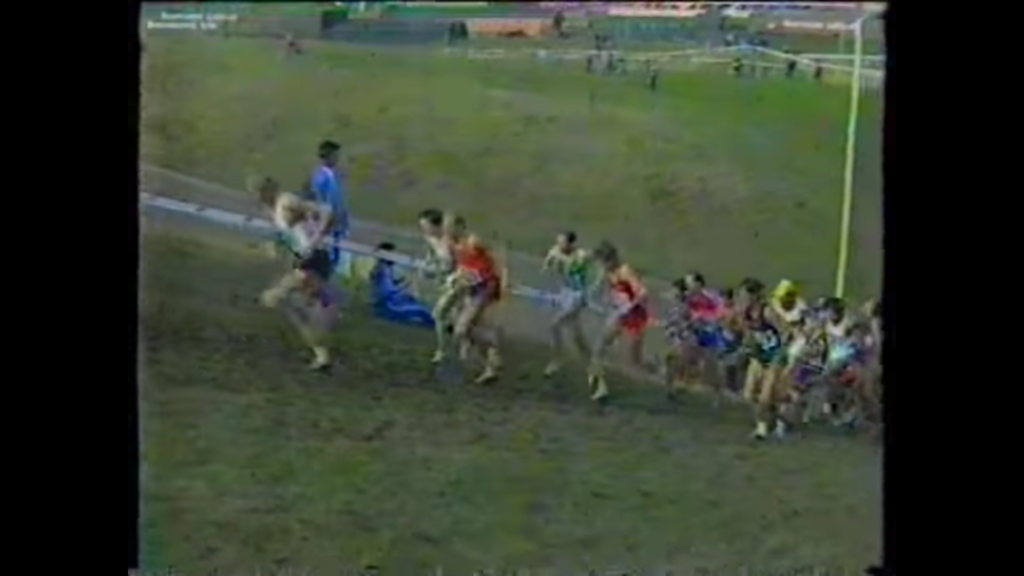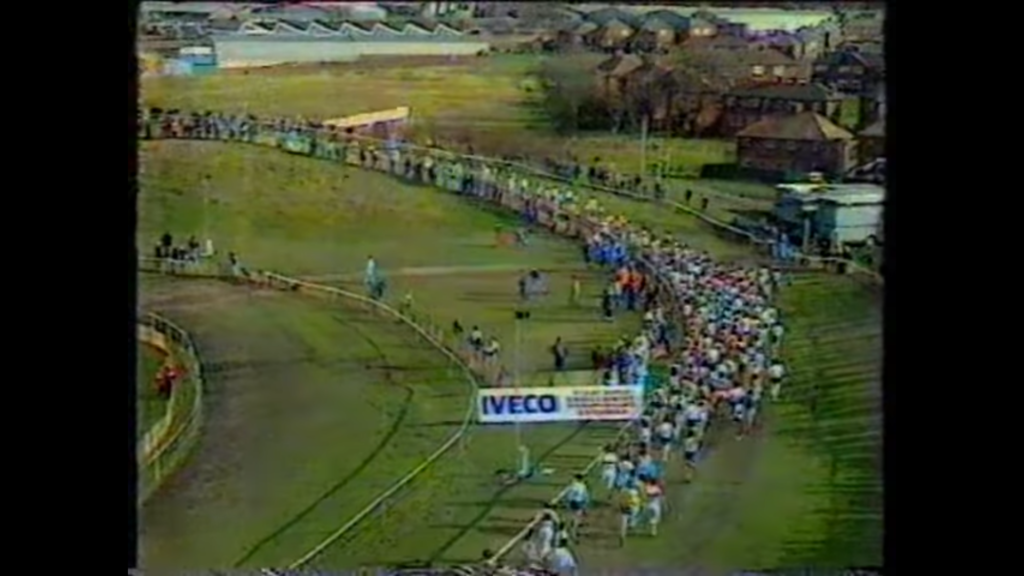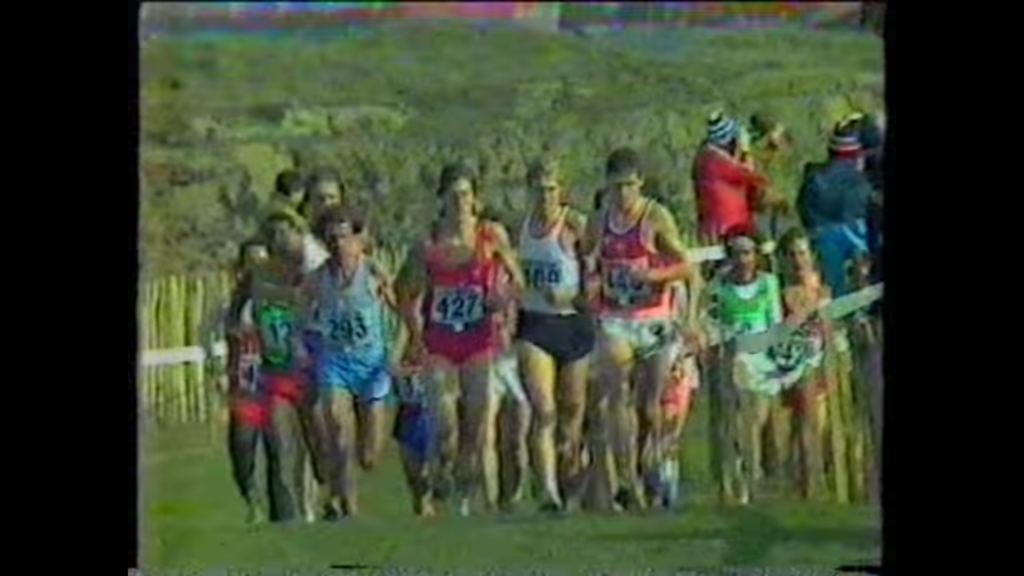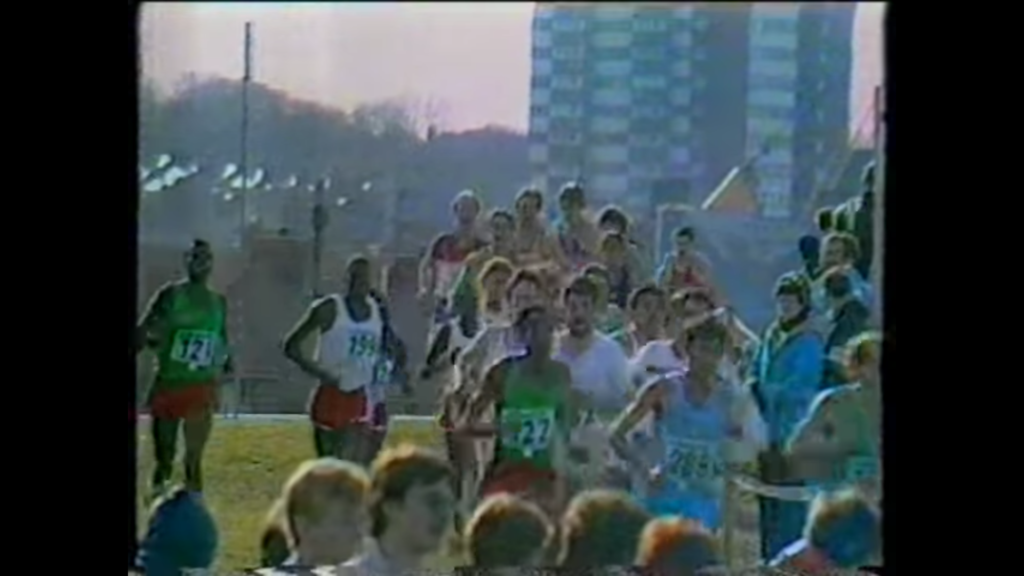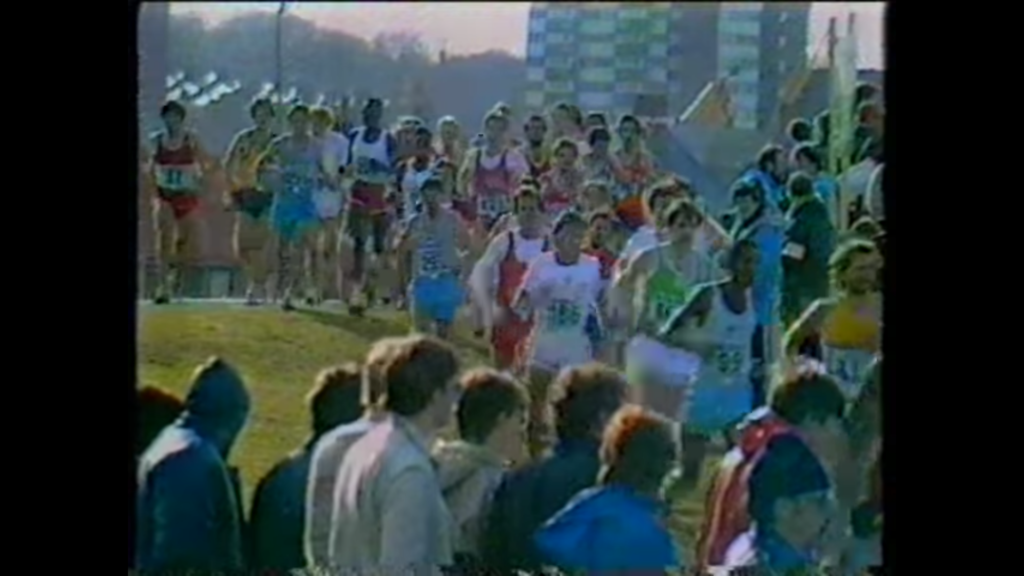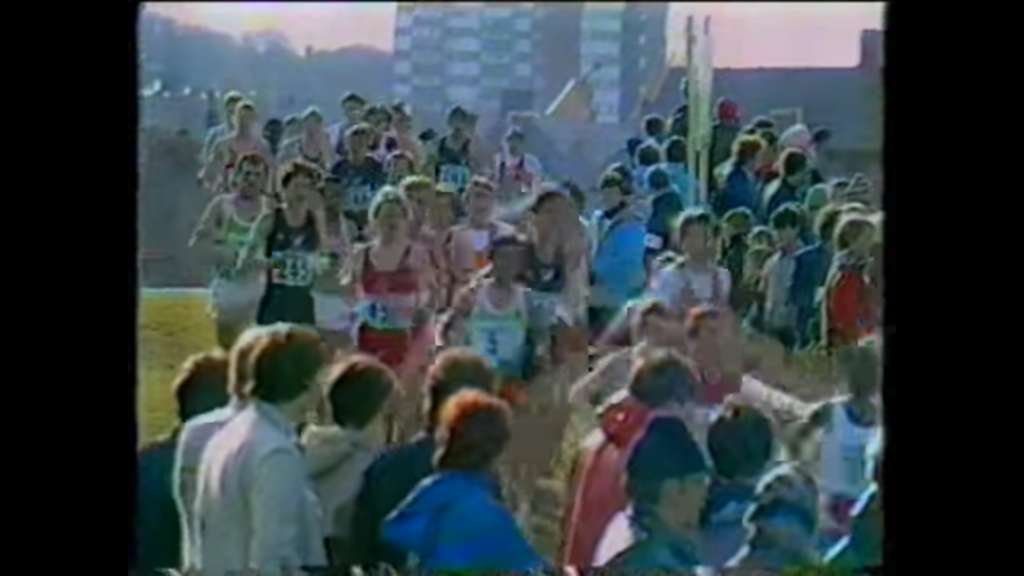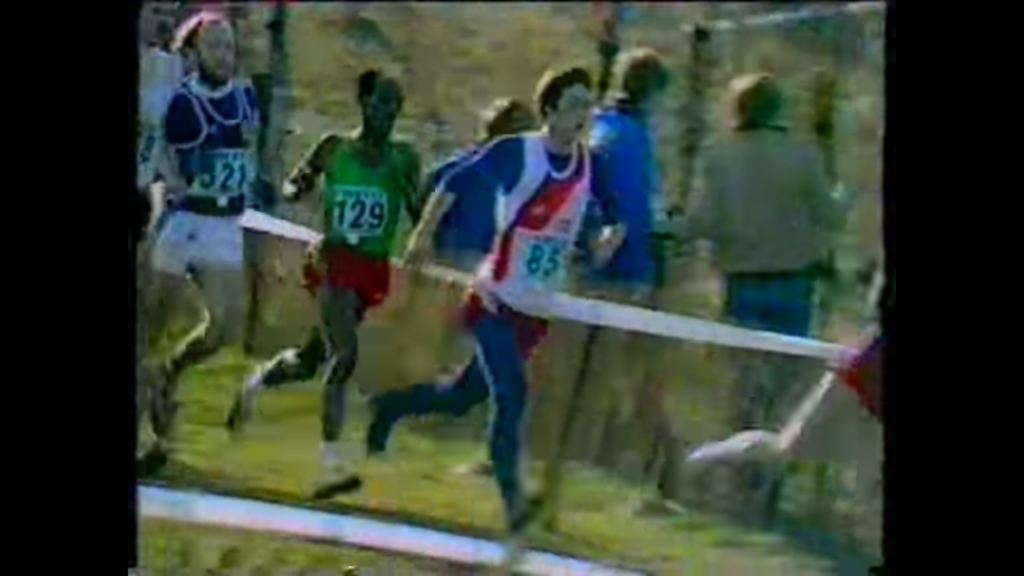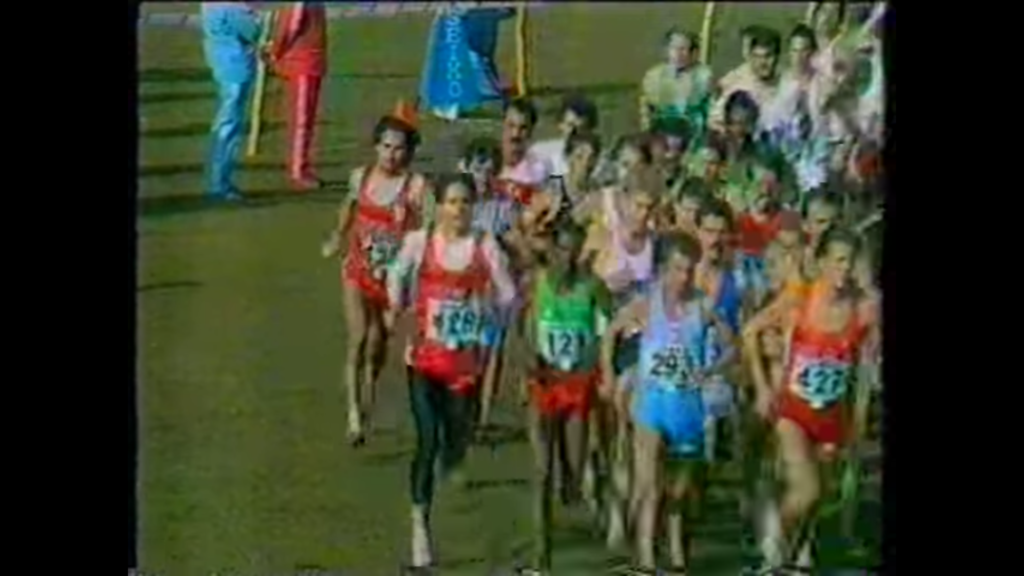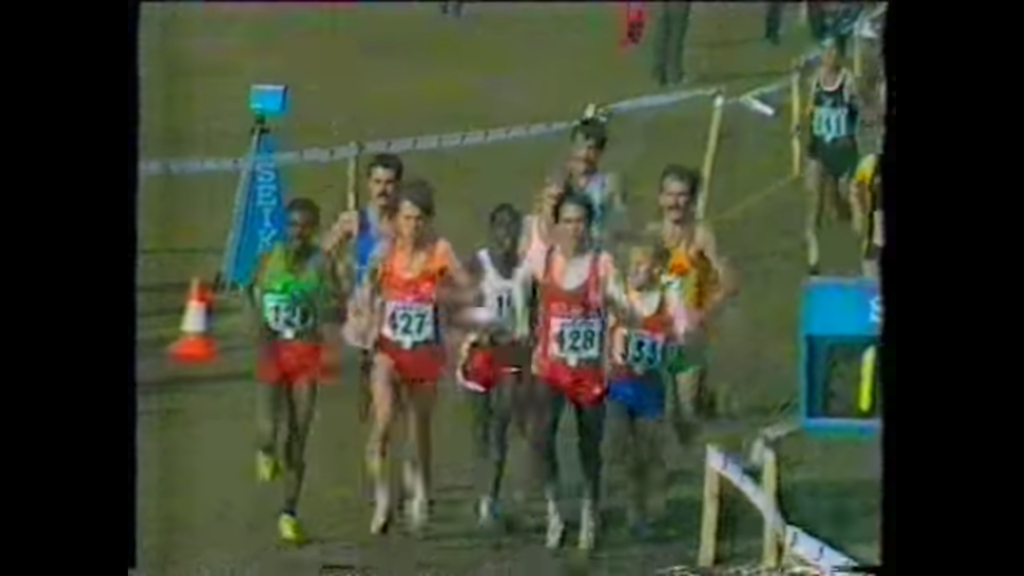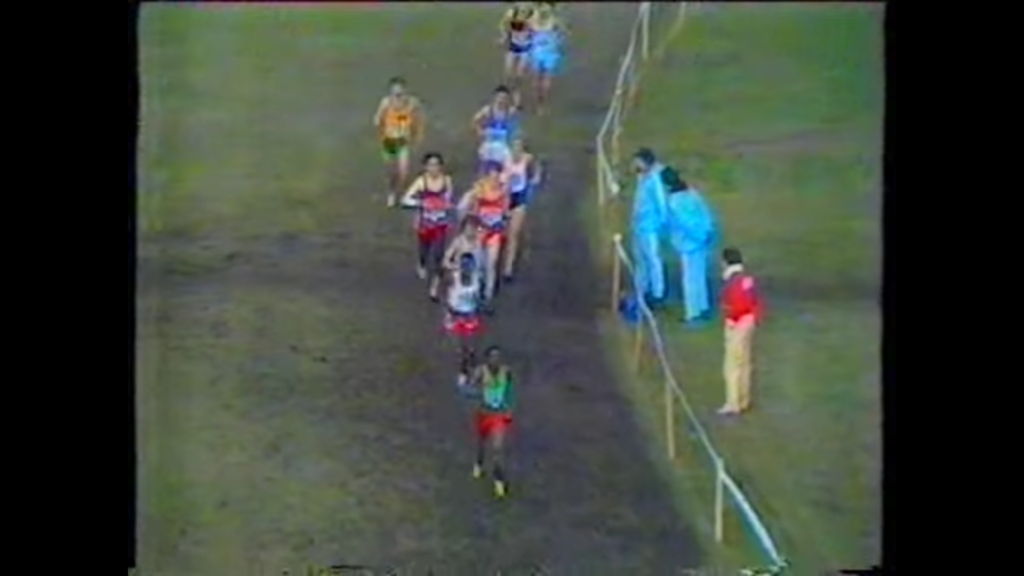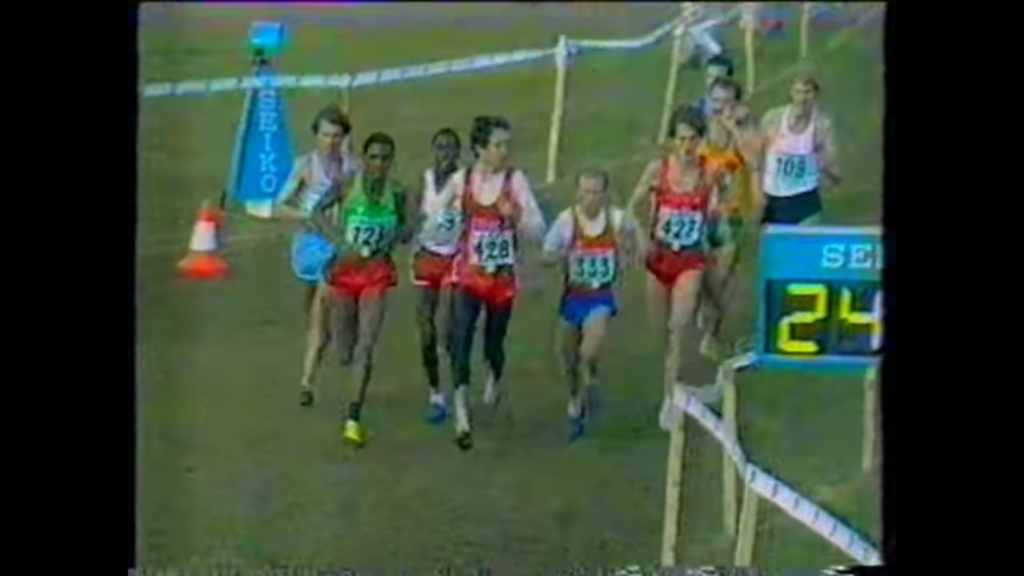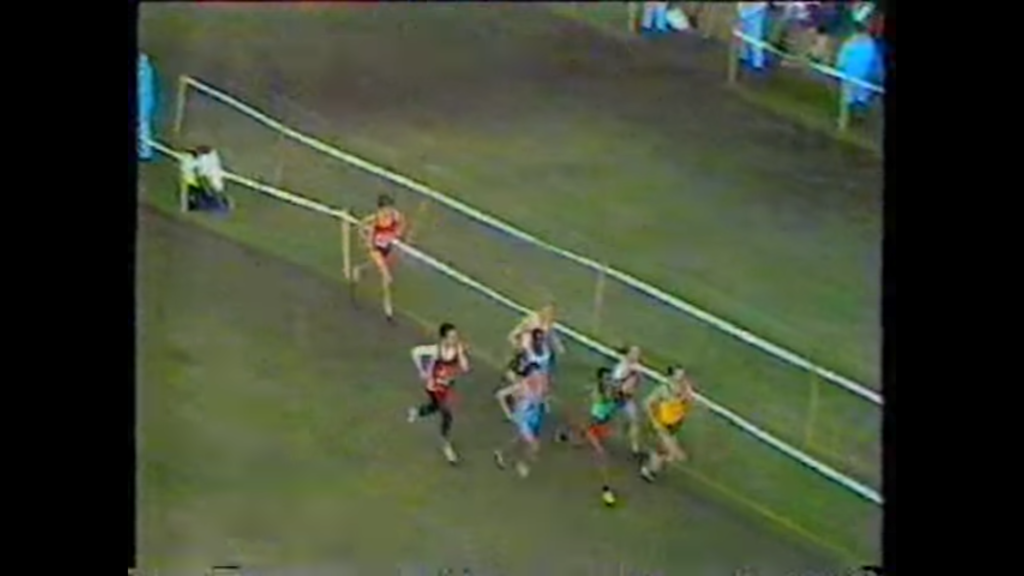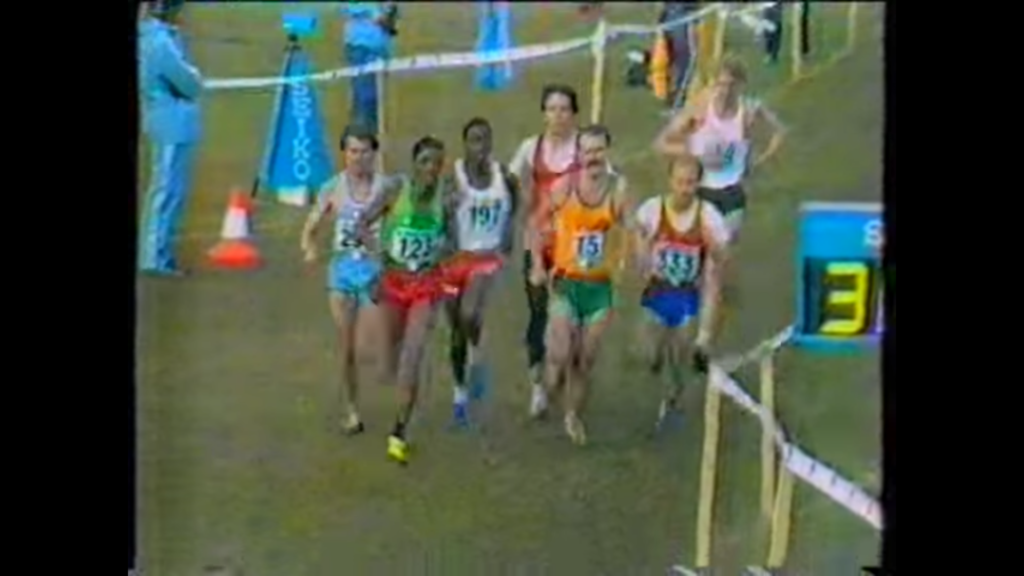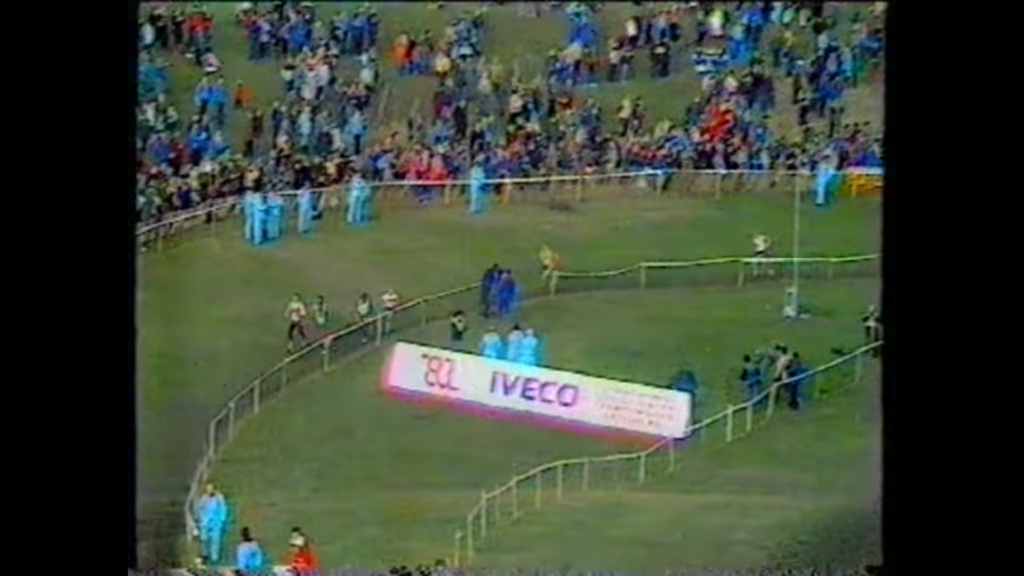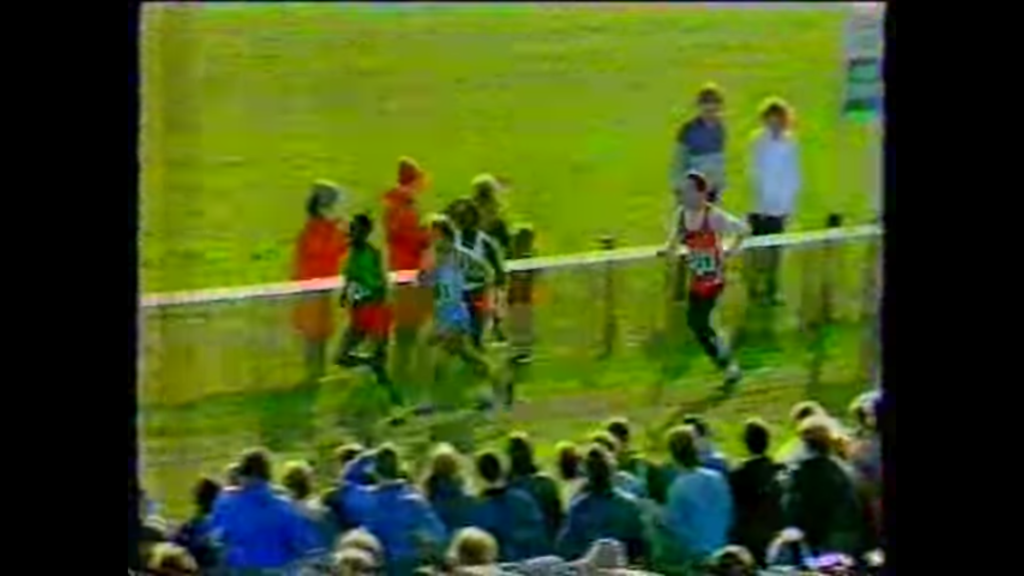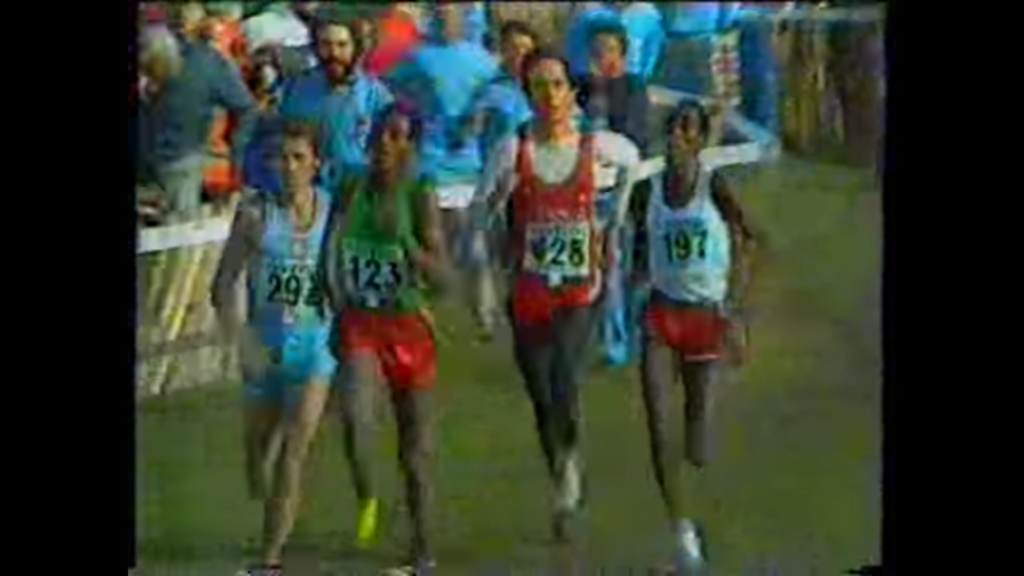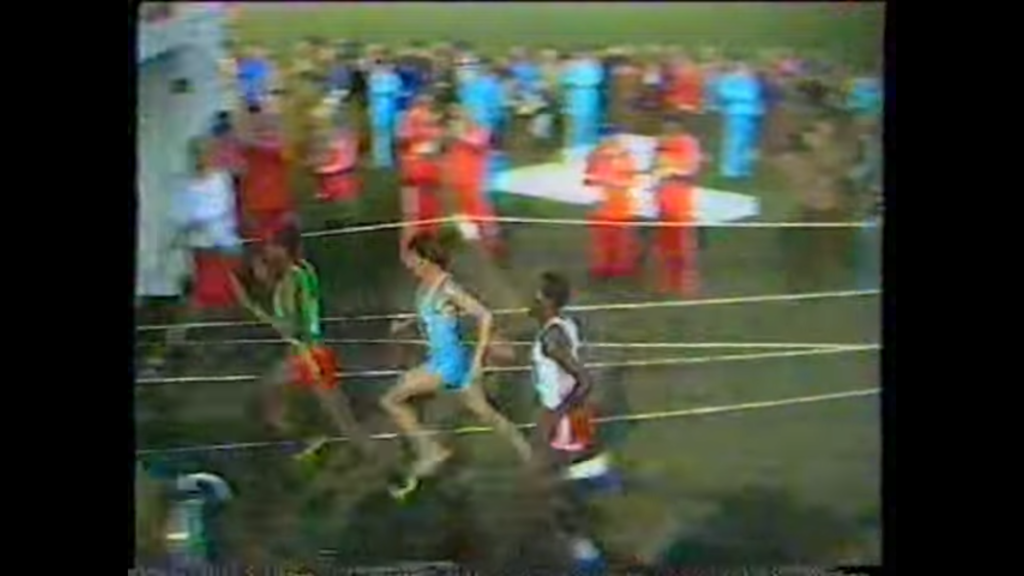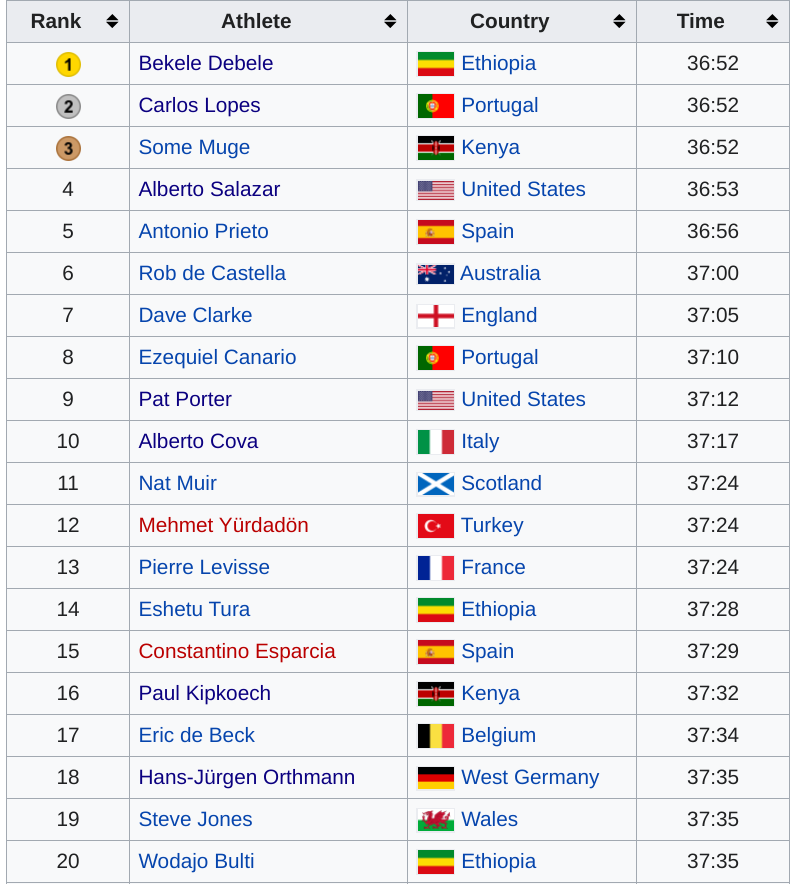I Was Bored, So I Watched the 1983 World Cross Country Championships
Throwback Thursday #5
By Jonathan Gault
May 7, 2020
Welcome back to Throwback Thursday. With no live sports during the coronavirus quarantine, I’m plumbing the depths of YouTube and watching one classic race per week and sharing my thoughts with you as to what I’m thinking as I watch it.
If you missed the first four installments, click below.
- TBT #1: 1998 NCAA XC
- TBT #2: 2000 Foot Locker XC
- TBT #3: 2007 World XC
- TBT #4: 2003 Foot Locker XC
This week, I’m diving into the men’s race 1983 World Cross Country Championships in Gateshead, England. Travel back to a time when everyone ran XC — even if you had a major spring marathon on the schedule. A time when America was good at XC. A time when a guy named Bekele was the best cross country runner in the world (okay, some things never change).
This race was loaded with stars — from Americans Alberto Salazar, Pat Porter, Ed Eyestone, and Craig Virgin to international legends like Rob de Castella, Carlos Lopes, and Miruts Yifter — on what purists would deem a “true” cross country course with mud and hills in northeast England. And you won’t find many closer finishes in a cross country race — the three medalists were all given the same time, with the fourth placer another second back.
I’d review the women’s race as well, but I could only find footage of the men on YouTube. It was a special race for American fans — led by Joan Benoit‘s 4th-place finish, the US won the team title. A month later, Benoit would run 2:22:43 to set the course record at the Boston Marathon — at the time, the fastest marathon in history by over two minutes. Not a bad spring for Joanie.
Enough preamble. Let’s go back to March 20, 1983. Below the video, see what I was thinking as I watched it.
0:38 Wonderful shot as the field prepares to climb the first hill of the course. It’s great to see so many different bright colors on the singlets.
While the influx of African talent has greatly improved the quality at World XC, these days, it’s basically impossible to win World XC if you were born outside of Africa — no one has done it since 1985.
1983 was one of the last years where it truly felt as if someone from any country could win (even though Ethiopia and Kenya both sent full teams). As the athletes climb the first hill, the legendary David Coleman informs us that the last five champions are all in the field, and all five hail from a different country: Mohammed Kedir of Ethiopia, Craig Virgin of the USA, John Treacy of Ireland, Leon Schots of Belgium, and Carlos Lopes of Portugal.
1:35 We’re not even half a mile in and there’s a big hairpin turn. I saw one guy in the middle of the pack get bumped and he had to literally stop running to make sure he was turning in the right direction again.
1:54 The color commentator, Ron Pickering, runs off a list of the favorite teams: Ethiopia, Belgium, Portugal, the United States, and, “hopefully England” (this is the BBC broadcast). It is staggering to imagine now that a list of favorite teams in a cross country race would not include Kenya, but entering 1983, Kenya had only won one team medal at World XC. Though considering Kenya finished 3rd in 1981 and 4th in 1982, Pickering was probably wrong to overlook them.
2:10 The field covers another steep hill, which Coleman reminds us they will have to cover six times, because this is a loop course. And of course, any time there are serious hills, the announcers are required by law to state that this is real cross country.
“Certainly this is a truer test of cross country than most international courses we’ve seen recently,” Coleman says.
Glad to know the tradition of complaining that most cross country courses are too easy was alive and well 37 years ago!
3:46 This race was held at Riverside Park on the banks of the River Tyne in Gateshead. Note the houses in the background. Could you imagine having a World Championship in your backyard? Pretty cool.
7:00 Apparently Ethiopia decided to hold its final trial for World XC on the World XC course…TWO DAYS BEFORE THE RACE.
“They arrived here on Friday, immediately went on the course, and ran a time trial to choose their team,” Coleman says. “And it was pretty difficult as well. They’ve got one to drop — they brought 10 athletes — and in fact, they made them race on Friday to decide who should be dropped.”
Somehow, Ethiopia still went on to win this race handily — even though defending champ Kedir was only 22nd and reigning Olympic 5k/10k champ Miruts Yifter was their ninth and last finisher in 67th.
Yifter may have bombed this race (he fell early and never recovered) but at least he showed up. In fact, pretty much everyone showed up in 1983, one of the reasons why this was a truly awesome race. In the shot above, you’ve got: Lopes (#293 in blue — why is Portugal blue?), the 1976 champ who would win World XC and Olympic marathon gold in ’84; the USA’s Pat Porter (#427 in red), two years into his record eight straight USA XC titles; and Steve Jones of Wales (#440 in red), who would set the world record in the marathon the following year. Partially obscured to the left in red is Alberto Salazar, the reigning Boston and NYC Marathon champ. Not pictured: Yifter, Virgin, future Olympic 10k champ Alberto Cova, and Rob de Castella, the marathon world record holder at the time. What a field!
10:04 How far back is Yifter? Well he’s not here…
10:15 …still waiting…
10:30 …not here either…
10:42 …finally! I know he fell early in the race, and I know he’s quite old* at this point, but it’s crazy to me that the reigning double Olympic champ is over 30 seconds behind the leaders and we’re not even a third of the way through the race.
*No one really knows how old Yifter was during this race. Pickering says on the broadcast he’s 40. According to Wikipedia, he was born on May 15, 1944, which would have made him 38. Many of his obituaries say he was 72 at the time of his death in 2016 but also state he was 40 at the 1980 Olympics, two statements that contradict each other. Other reports say he was as old as 42 in Moscow, which would have made him 44 or 45 at 1983 World XC.
However old Yifter was, he had an all-time great quote when asked about his age.
“I don’t count the years. Men may steal my chickens, men may steal my sheep. But no man can steal my age.”
I’m not sure what it means, but it’s awesome.
11:50 Can someone explain Salazar’s (#428) outfit to me? Some athletes are wearing a t-shirt underneath their singlet, but Salazar has gone for the long-sleeve shirt and full tights. Why is he the only one bundled up? And if it’s cold enough to wear full tights, why isn’t Salazar wearing gloves as well? I’m puzzled.
17:56 Porter and Salazar move to the front at the halfway point. Americans 1-2!
Side note: how many times since this race have American athletes been 1-2 — at any point — in a World Championship or Olympic final? Evan Jager and Donn Cabral led midway through the 2012 Olympic steeple final. Matthew Centrowitz and Ben Blankenship were briefly 1-2 in the 2016 Olympic 1500 final. And of course Emma Coburn and Courtney Frerichs went 1-2 in the steeple at the 2017 Worlds. Any others in the past 37 years?
21:33 We’ve got our first major move of the race as Ethiopia’s Bekele Debele opens a gap on the leaders midway through lap four. Is it a rule in Ethiopia that if you’re named Bekele, you have to be fast?
24:03 Debele’s lead was short-lived; by the start of lap five, it’s a nine-man pack up front. Salazar and de Castella are both in there, which bears mentioning. At the time, they were the two best marathoners in the world and the two fastest in history (though Salazar’s 2:08:13 pb from the 1981 NYC Marathon was later be found to have come on a short course). They were also scheduled to race each other at the Rotterdam Marathon just three weeks later. So was Carlos Lopes, also in the lead pack here. Yet they all wanted to run World XC.
By the way, Lopes (2nd), Salazar (4th), and de Castella (6th) all ran well at World XC, and both Lopes (2nd, 2:08:39 pb) and de Castella (1st in 2:08:37, 19 seconds off his pb) ran well in Rotterdam too (Salazar was 4th in 2:10:08). Something to think about the next time a pro skips World XC to focus on a spring marathon.
27:48 The commentators are paying a ton of attention to the team race (it seems like the team title is mostly ignored at World XC these days).
Pickering is impressed because “it’s a home-based team of the Kenyans. None of their 60 or so American-based runners are here, so they’re doing exceptionally well.”
30:17 One lap to go, and there are seven runners from seven different countries (and four continents) left in the lead pack. This is as diverse a leading group as you will find at World XC — or a world championship in any sport, for that matter.
33:50 De Castella and England’s Dave Clarke have dropped off, leaving Salazar, Debele, Lopes, Some Muge of Kenya, and Antonio Prieto of Spain up front with three-quarters of a mile to go.
Also: does anyone else expect the volunteers to jump in front of the runners at any moment and start hosing them down? With their pale blue jump suits they look like they’re part of a hazmat squad. Or maybe I’ve just seen too many hazmat suits recently…
35:54 There’s about 300m to go now and it’s still super tight. Debele is attacking again, but Lopes and Muge hang right with him; Salazar allows them to gap him slightly, but he isn’t done yet…
36:28 With about 50 meters to go, it’s still a four-man race. This is incredible drama. One of these men will be the world champ, and one of them won’t even get to stand on the podium.
Coleman tells us that Salazar — who’s running a marathon in three weeks — is “reckoned to have no finishing speed.”
36:34 In a thrilling finish, Bekele Debele barely nips Lopes and Muge for the gold as all three men are credited with the same 36:52 time for the 12k course. Bekele has been kicking ass at World XC since 1983.
Salazar has to settle for fourth, just a second back — I guess Coleman was right about his kick.
One complaint: why is the finish line so narrow? Lopes tried to pass Debele on the inside but couldn’t get by in time and wound up having to run behind Debele at the very end because he ran out of space to his right.
Not a screenshot, but here are the results, courtesy of Wikipedia. Again the diversity is stunning: 11 different countries represented in the top 13, and 14 in the top 20 (though in 2020, England, Scotland, and Wales all compete under the same flag).
It’s certainly different now. Across the last three World XC championships, just two men born outside of Africa have finished outside of the top 20.
In the team competition, Ethiopia wins easily with 104 points (six men score) with the US second (170). Kenya (191) nips Australia (193) for the bronze. The US would earn silver again in 1984, but after that it would take them 29 years to beat Kenya at World XC again.
***
That’s it for this week. Have a suggestion for a race I should rewatch? Let me know on Twitter or in an email.
Previous:
*TBT #4: I Was Bored, So I Watched Galen Rupp, Matt Withrow, & Jenny Simpson at the 2003 Foot Locker Championships
*TBT #3: I Was Bored, So I Watched the Insane 2007 World Cross Country Championships in Kenya
*TBT #2: I Was Bored, So I Went Back and Watched Ritz, Webb, & Hall Battle at the 2000 Foot Locker Cross Country Championships
*TBT #1: I Was Bored, So I Went Back and Watched the 1998 NCAA Cross Country Championships
